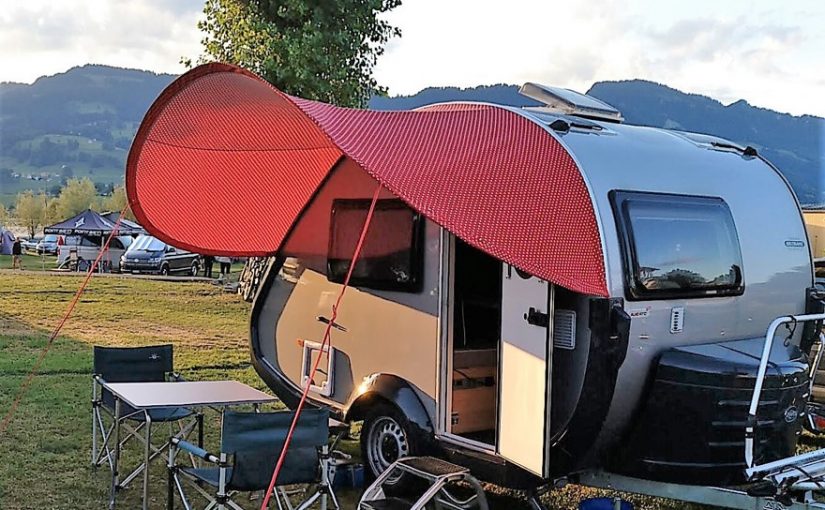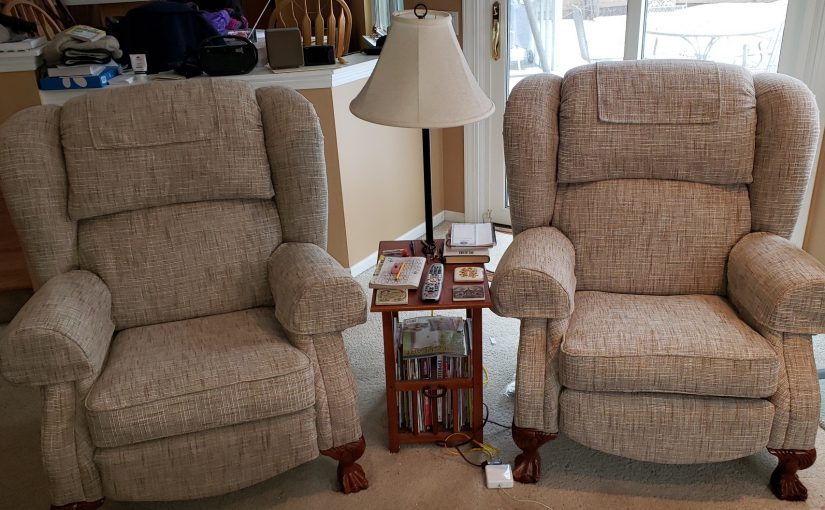For Jean Buchanan, sewing is not just a hobby and career, but it also may very well be her destiny. She’s been sewing for over 50 years and comes from a long line of sewists. Her great-grandmother was a tailor of men’s suits, and her grandmothers, aunts and mother have all sewn and quilted through the years. Jean first learned to sew from her mother-in-law, and she’s never looked back. With a little help from Sailrite®, Jean’s taken her talent to the next level and made a name for herself in the process.
After five decades of sewing children’s clothes and stuffed animals, plus clothing for herself and her husband, Jean encountered a project that she had never attempted before and one she never thought she would stumble upon in her lifetime. But always being an adventurous sewist open to new ideas and experiences, she took a cue from her daughter to try out a different kind of DIY, which would lead her to her largest project yet.
“One day my daughter brought me a southwestern printed tarp and asked me to make her a visor for her T@B 320 trailer. It took many more tarps and three attempts to get the patterns tweaked — it fit the T@B pretty well.”

If you’re not familiar, T@B (or TAB) is a brand of trailerable camper with a sleek teardrop design. These charming, pint-sized campers blend European design with Ohio Amish craftsmanship for cozy living on-the-go. After Jean finished her daughter’s project, she found that these campers were perfectly complemented by her custom sunshades with their petite, visor-like design. Not only was her first sunshade good-looking, but it also functioned as a way to protect the camper’s occupants from the sun and rain while maintaining convenient portability for those looking to get up and go.
Spurred by her first success, Jean decided she enjoyed the work and wanted to continue the process. The next step was to make efforts to reach a larger customer base and make sure she could streamline her sunshades for more efficient sewing. She first began by creating a shop on Etsy (an e-commerce site focused on handmade or vintage items), based out of North Olmsted, Ohio. She later launched her own website and enlisted the help of a professional engineer to create a dependable design for the T@B 400 trailer — and success! A small business was born.
But when your business revolves around sewing, you need a dependable sewing machine to carry you through your toughest assemblies. So with this new business resting in her capable hands, Jean decided that none of her work could be completed without a heavy-duty industrial sewing machine to sew through multiple layers of fabric. The hunt for such a machine was what led Jean to Sailrite in the first place.

She explained, “I chose the Fabricator® Sewing Machine after looking at many industrial machines because it was advertised as a small awning shop machine. I read reviews that were positive concerning the machine and watched videos. Based on what I read and what I watched, I decided it was the right one and I have not been disappointed.”
With her husband, Clyde, by her side, Jean has expanded her creations and has now launched her own website to showcase and sell her unique camper sunshades worldwide. With a customer base reaching as far as Spain, Germany, Poland, Switzerland and Canada, it’s hard to deny the growing popularity of these adorable additions. Not only are these unique sunshades a way for campers to express their creativity, but they’re also a way for Jean to utilize her adept sewing skills for a practical cause.
She was happy to explain the painstaking steps that go into the creation of the TAB sunshades, as they’re tailored to the requests of each customer. First, each piece of fabric and webbing is cut with the Sailrite® Edge Hotknife, then a convenient carrying bag is sewn, followed by a reinforcement of webbing to the places where the visor pole begins and ends. Next comes the construction of the sleeve for the pole followed by the main fabric assembly. Each part of the process that requires sewing is done using the Fabricator Sewing Machine — and the results speak for themselves.
Here at Sailrite, it gives us great joy to be there every step of the way to help make things a little easier. “Not only do I use the Fabricator Sewing Machine and the Sailrite Edge Hotknife, but I just started using some of Sailrite’s 300 denier polyester outdoor fabric [Odyssey]. The quality and support are outstanding! One could not go wrong using any of their products. I especially love the magnetic sewing guide and zipper feet for sewing keder rope!”
With a thriving business to attend to, what lies ahead for crafty creator Jean? She explained, “I plan to go back to regular sewing when I can no longer physically sew these sunshades. But who knows, I’m always ready for a challenge. My daughter is full of ideas for me.” And although her daughter does not share her passion for sewing, she helps with the business as a public relations assistant and is always ready to bring Jean more ideas to practice her sewing on.
At this point in time, Jean’s future is wide open, but regardless, she is confident that she and the Fabricator can tackle anything that may come. We can’t wait to see what she creates next!

Who We Are
Sailrite is your one-stop DIY shop! We are a passionate crew of do-it-yourselfers who strive to equip you with the supplies and how-to knowledge you need to tackle your next project. Do you want to learn upholstery, leatherwork, canvaswork, hobby sewing, bag making or more? We have the fabric, tools, hardware, sewing machines and notions you need to master any DIY. And even if you’ve never sewn before, our tutorials and how-to videos are designed for beginners and experienced crafters alike.
Start your DIY journey today: www.sailrite.com





